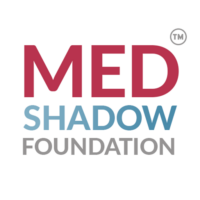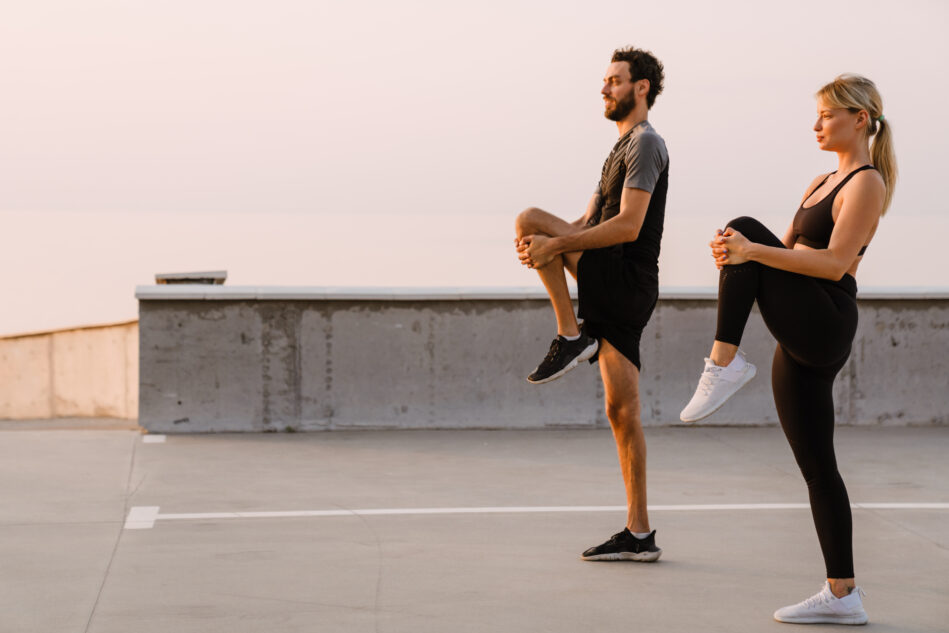Could exercise work as medicine? Are you tired of taking meds for diabetes, high blood pressure, heart disease, insomnia, even depression? Instead of standing in line at the pharmacy, you might find taking a walk will help you more than drugs. Considering exercise to be as important as taking medicine might change your life.
Can Exercise Replace Medication?
Not long ago I received a phone call from a very excited client of mine. I had been working as a personal trainer with her for several months. One goal we were working toward was lowering her blood sugar levels in an attempt to have her avoid going on medication. She was calling to tell me the great news about her latest blood work results: all of her diabetes markers had decreased, negating her need for medication.
“I just can’t believe it!” she exclaimed. “I didn’t expect exercise to help out so much!”
Trainers and exercise enthusiasts alike have found that physical activity can lead to significant improvements in common medical conditions. Jennifer Katt, owner of Surround Fitness in Woodbridge, VA, has several clients who have experienced health benefits, from improvements in blood sugar to decreases in blood pressure. “I have high blood pressure, along with Sjogren’s Syndrome, osteoarthritis, osteopenia, and hypothyroidism,” explains one of her clients. “I have lost inches and weight due to increased exercise and activity, which has definitely benefited my hypertension and osteoarthritis. The strength training, which I do multiple times a week, is helping prevent osteopenia from becoming osteoporosis.”
In some cases, exercise can be as effective as medication for managing certain health conditions. “The benefits of exercise in minimizing risk and managing diabetes are vast,” says Alison Acerra, Registered Dietitian and Functional Nutrition Coach. “Exercise can improve the body’s sensitivity to insulin, helping to control blood sugars, while lowering blood pressure, reducing risk of cardiovascular disease and improving mood and overall sense of wellbeing.”
Here is a list of several conditions, the medications commonly used to treat them, their possible side effects, and how exercise can help reduce or eliminate the need for medication.
Type 2 Diabetes
Common Medications:
Metformin (Biguanides: Glucophage)
Jardiance (empagliflozin), Invokana (canagliflozin) — SGLT2 inhibitors
Victoza (liraglutide), Ozempic (semaglutide) — GLP-1 receptor agonists
Onglyza (saxagliptin), Nesina (alogliptin) — DPP-4 inhibitors
Avandia (rosiglitazone), Actos (pioglitazone) — thiazolidinediones
Amaryl (glimepiride), Glucotrol (glipizide) — sulfonylureas
Possible Side Effects: While each class of diabetes medications has different side effects, some of the most common are nausea, diarrhea, weight changes, headache, and dizziness, and some of the most serious are hypoglycemia (a sudden drop in blood sugar), kidney failure (for SGLT-2 and GLP-1 drugs), and increased risk of heart attacks (for thiazolidinediones).
Expert Opinion: In contrast to exercise, diabetes medications can come with serious risks and tradeoffs. For example, the drug Avandia (rosiglitazone) has been shown to increase the risk of cardiovascular events in Type 2 diabetes patients. Other types of medications (for example, SGLT2 inhibitors) reduce the risk of cardiac events in diabetics, so physicians are currently advocating for wider use of these medications. However, these drugs come with other downsides, such as possible kidney damage. Given the complexity of medication management, exercise can give people with Type 2 diabetes more options for safely improving their health.
Exercise, both aerobic and strength training, improves the body’s response to insulin, as muscle and fat become more efficient in removing glucose from the blood, says Katt.
“There is some data indicating that interval training provides the best benefit for insulin resistance (pre-diabetes),” says Amy Doneen, MSN, ARNP, co-author of Beat the Heart Attack Gene (Wiley, 2014). “Interval training requires cyclic raising of the heart rate beyond 70 percent of [a person’s] maximum for a period of time and then reducing the intensity back to moderate” for a similar amount of time. (The American Heart Association defines “moderate intensity” as 50 to 70 percent of maximum heart rate). The intervals can run from several seconds to several minutes.
According to the American College of Sports Medicine and the American Diabetes Association, the combination of aerobic exercise and resistance training have the greatest effect on blood sugar management. The American Diabetes Association states that “high-intensity bursts of activity, weight lifting or both…can boost the health benefits of your aerobic workout.” The ADA recommends that individuals target 150 minutes of aerobic exercise per week at a moderate pace, or 75 minutes per week at a vigorous pace. The recommendations also include resistance training two or three times per week, like “free weights, weight machines or activities that use your own body weight — such as rock climbing or heavy gardening.”
High Blood Pressure/Heart Disease
Common Medications: Microzide (hydrochlorothiazide), Lasix (furosemide) — diuretics
Lopressor (metoprolol), Coreg (carvedilol) — beta blockers
Prinivil (lisinopril), Monopril (fosinopril) — angiotensin converting enzyme inhibitors (ACE inhibitors)
Cozaar (losartan) — angiotensin receptor blocker (ARB)
Norvasc (amlodipine), Cartia (diltiazem) — calcium channel blockers
Possible Side Effects: mineral depletion (for diuretics), decreased heart rate response to activity (for beta blockers), high potassium (for ACE inhibitors and angiotensin receptor blockers), and fluid retention (for calcium channel blockers).
Expert Opinion: “Research tells us exercise will reduce blood pressure even in patients with the toughest blood pressures to control—resistive hypertension,” says Doneen. “One of the biggest causes of high blood pressure is pre-diabetes. Lots of pre-diabetic patients present with hypertension and are on several blood pressure medications. Once they start moving away from diabetes, their blood pressure will start to decrease and blood pressure medications can be reduced or stopped.”
“Exercise is known to lower blood pressure and is considered a cornerstone of blood pressure management,” adds Doneen. “ The good news is that studies show that both aerobic and resistance training improve blood pressure.”
A 2019 meta-analysis that compared studies on exercise with studies on medication found that exercise regimens were as effective as the standard medications at lowering blood pressure in people with hypertension. This was true of both aerobic exercise and resistance training, and the benefits were greatest for those with the highest blood pressure.
Insomnia
Common Medications: Ambien (zolpidem), Sonata (zaleplon), Lunesta (eszopiclone) — sedative-hypnotics
Belsomra (suvorexant), Dayvigo (lemborexant) — orexin receptor antagonists
Possible Side Effects: daytime drowsiness, headache, dizziness, cognitive impairment, allergic reaction, complex sleep behaviors (such as walking, eating, or driving), increased risk of depression, falls, and poor driving.
Expert Opinion: “While sleeping pills are only intended for short term use, they are typically used for much longer periods,” says Acerra. “They can hide the underlying root causes of insomnia and mask other health conditions that need attention. It’s also possible to build up a tolerance [to sleep aids], creating a need for higher doses that come with health risks such as slowed breathing, digestive imbalances, and cognitive deficits. Unfortunately, withdrawal symptoms can be challenging and result in more severe insomnia.”
Exercise: Studies have long shown that exercisers tend to sleep better. A 2013 National Sleep Foundation Poll found:
- 83% of vigorous exercisers reported very or fairly good sleep quality, compared to 56 percent of non-exercisers.
- 67% of vigorous exercisers reported a good night’s sleep on all or most work nights, compared to 39% of non-exercisers.
While it was once believed that exercising too close to bedtime interfered with sleep, more recent research suggests this effect varies across individuals; some people are able to exercise at night without sleep disruption while others are not. The National Sleep Foundation advises normal sleepers to exercise at any time of day, as long as it doesn’t reduce their total sleep time. For those with existing insomnia, avoiding late-night exercise (especially vigorous exercise) is still recommended.
For insomnia sufferers, however, exercise is not a quick fix. A 2019 review found that exercise was most clearly effective for people with milder versions of insomnia; those with more severe insomnia may need to combine exercise with other interventions. However, while exercise may not improve every insomnia symptom, it appears particularly promising for reducing the time it takes to fall asleep, which is one of the most common and frustrating symptoms of insomnia.
Depression
Common Medications: Lexapro (escitalopram), Zoloft (sertraline), Prozac (fluoxetine) — selective serotonin reuptake inhibitors
Effexor (venlafaxine), Cymbalta (duloxetine) — serotonin norepinephrine reuptake inhibitors
Possible Side Effects: fatigue, drowsiness, nausea, increased appetite, weight gain, sexual dysfunction such as decreased sex drive or trouble reaching orgasm, insomnia, and dry mouth.
Expert Opinion: “While antidepressants can be effective in more chronic, moderate, or severe cases of depression, they come with significant side effects, says Acerra. “In addition, they have been shown to be ineffective against mild depression. Exercise can be both an adjunct and alternative therapy. While high-intensity exercise releases endorphins, resulting in a “runner’s high,” low-intensity exercise releases nerve growth factor which stimulates nerve cell growth and neural connections that can relieve depression.”
“Exercise can reduce the need for medications in this case, because it can improve mood, sleep, and a person’s sense of self-efficacy and self-esteem,” explains Katt. “It can also reduce stress and increase energy.”
Research published in The Primary Care Companion Journal of Clinical Psychiatry suggests that exercise frequency is more important regarding depression than intensity and duration, at least at first, until exercise as a habit is established. Both aerobic exercise and resistance training have been shown to be effective in reducing depressive symptoms. The key is to find something you like and will enjoy, whether it’s hiking, Zumba, yoga, running or swimming.
In Conclusion
Many prescription drugs used to treat common conditions have serious side effects that often prompt the need for additional medications. This disease-drug-more drugs cycle can be eliminated or lessened when patients use exercise and other non-pharmacological approaches, in conjunction with medication when necessary, to treat their illnesses.
This article was originally published on March 27, 2014. It was updated by Joyce Clanon and republished February 11, 2022.






